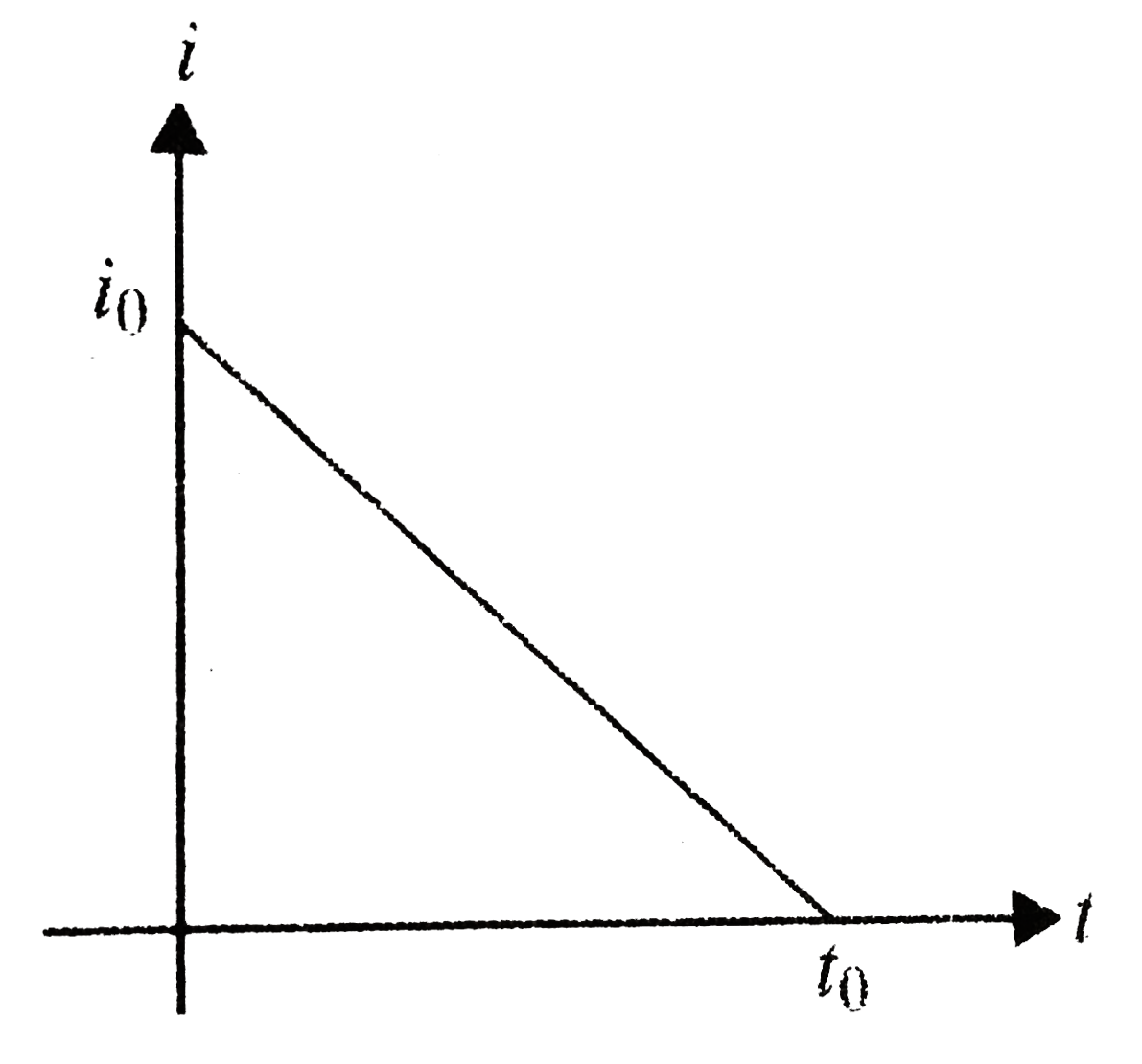In a conductor, electrons flow from its end A to B in 2 s. Find the current flowing through the conductor.
To find the current flowing through the conductor, we can follow these steps:
Step 1: Identify the given values
- Number of electrons (N) = 6.25×1016
- Time (T) = 2 seconds
- Charge of one electron (e) = 1.6×10−19 coulombs
Step 2: Calculate the total charge (Q)
The total charge (Q) can be calculated using the formula:
Q=N×e
Substituting the values:
Q=(6.25×1016)×(1.6×10−19)
Step 3: Perform the multiplication
Calculating the charge:
Q=6.25×1.6×1016×10−19
Q=10.0×10−3
Q=1.0×10−2 coulombs
Step 4: Calculate the current (I)
Current (I) is defined as the charge per unit time:
I=QT
Substituting the values:
I=1.0×10−22
Step 5: Perform the division
Calculating the current:
I=0.5×10−2 amperes
I=5.0×10−3 amperes
I=5 milliampere (mA)
Step 6: Determine the direction of current
Since electrons flow from A to B, the conventional current flows in the opposite direction, which is from B to A.
Final Answer:
The current flowing through the conductor is 5 mA, and it flows from B to A.
---
- Number of electrons (N) = 6.25×1016
- Time (T) = 2 seconds
- Charge of one electron (e) = 1.6×10−19 coulombs
The total charge (Q) can be calculated using the formula:
Q=N×e
Substituting the values:
Q=(6.25×1016)×(1.6×10−19)
Calculating the charge:
Q=6.25×1.6×1016×10−19
Q=10.0×10−3
Q=1.0×10−2 coulombs
Current (I) is defined as the charge per unit time:
I=QT
Substituting the values:
I=1.0×10−22
Calculating the current:
I=0.5×10−2 amperes
I=5.0×10−3 amperes
I=5 milliampere (mA)
Since electrons flow from A to B, the conventional current flows in the opposite direction, which is from B to A.
The current flowing through the conductor is 5 mA, and it flows from B to A.
Topper's Solved these Questions
- BOOK - ICSECHAPTER - CURRENT ELECTRICITYEXERCISE - EXERCISE-8(B)15videos
CURRENT ELECTRICITY
- BOOK - ICSECHAPTER - CURRENT ELECTRICITYEXERCISE - EXERCISE-8(B) (MULTIPLE CHOICE TYPE)3videos
CURRENT ELECTRICITY
- BOOK - ICSECHAPTER - CURRENT ELECTRICITYEXERCISE - EXERCISE-8(A) ( MULTIPLE CHOICE TYPE)2videos
CURRENT ELECTRICITY
- BOOK - ICSECHAPTER - CALORIMETRYEXERCISE - EXERCISE-11(B) (NUMERICALS)15videos
CALORIMETRY
- BOOK - ICSECHAPTER - ELECTRO-MAGNETISM EXERCISE - EXERCISE-10 (C) NUMERICALS1videos
ELECTRO-MAGNETISM
Similar Questions
When a current passes through a resistor, its temperature increases. Is it an adiabatic process?
View SolutionResistors of 1, 2, 3 ohm are connected in the form of a triangle. If a 1.5V cell of negligible internal resistance is connected across 3 ohm resistor, the current flowing through this resistance will be
View SolutionIn CE NPN transistor 1010 electrons enter the emitter in 10−6 s when it is connected to battery. About 5% electrons recombine with holes in the base. The current gain of the transistor is ……. . (e=1.6×10−19C)
View SolutionRelation between current in a conductor and time is shown in fig.

Total charge flowing through the conductor isView SolutionConsider a wire of length 0.1 m with an area fo cross section 1mm2 connected to 5V. Find the current flowing through the metallic wire where μ=5×10−6m2
V1s−1,e=1.6×10−19C,andn=8×1028m−3.View SolutionHow many electrons pass through a bulb in 1 min, if the current is 400 mA. (e=1.6×10−19C)?
View SolutionIf the potential difference across the ends of a conductor is doubled, the current flowing through it gets
View SolutionA total of 6.0×1016 electrons pass through any cross - section of a conducting wire per second. Find the current.
View SolutionA uniform copper wire of length 1m and cross section area 5×10−7m2 carries a current of 1A. Assuming that are 8×1028 free electron per m3 in copper, how long will an electron take to drift from one end of the wire an electron the other. Charge on an electron =1.6×10−19C
View SolutionA conductor carries a current of 0.2A. Find the amount of charge that will pass through the cross-section of the conductor in 30s. How many electrons will flow in this time interval if the charge on one electron is 1.6×10−19C ?
View Solution

